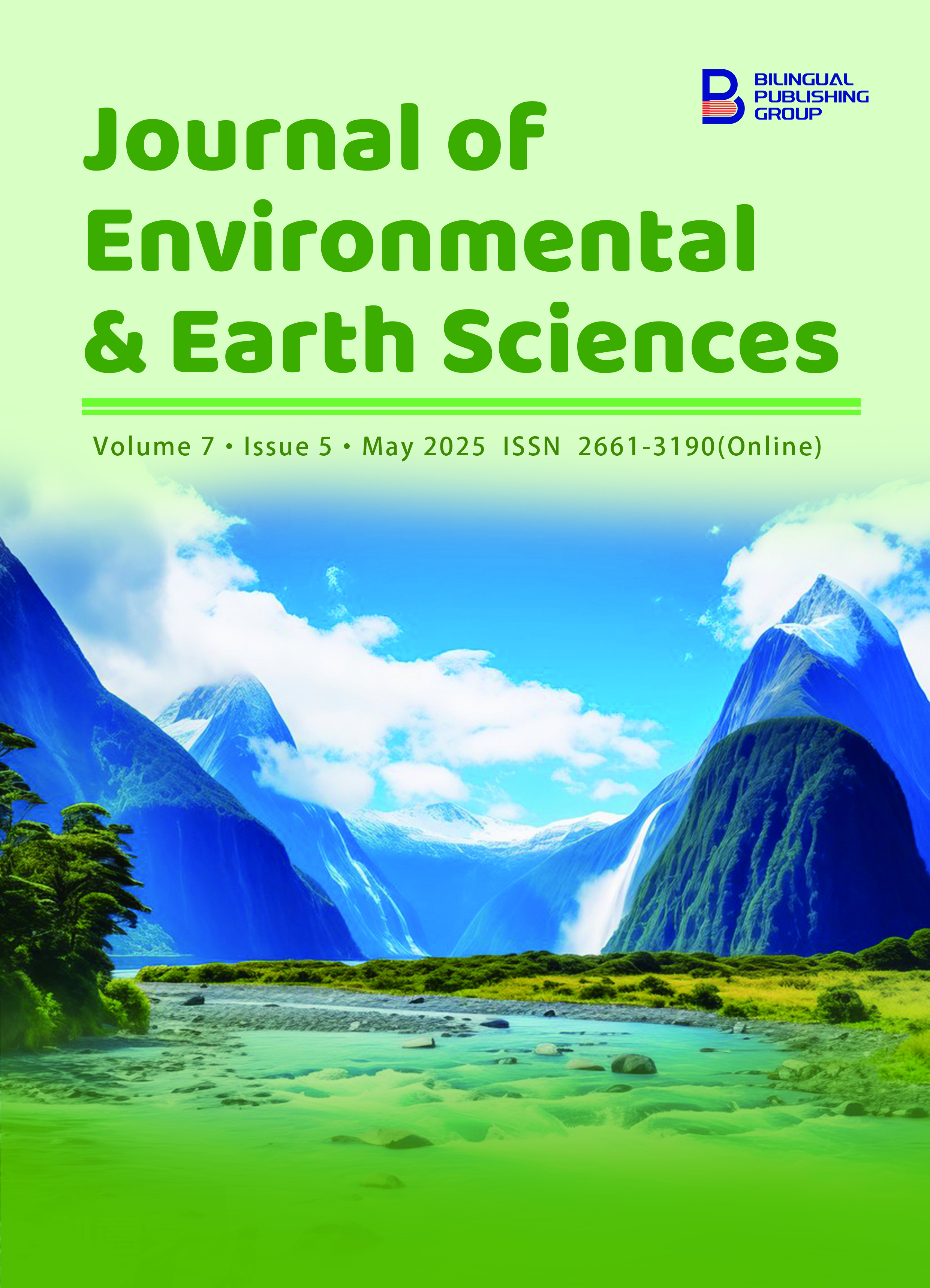
Design and Effectiveness of Coastal Protection Structures: Case Studies and Modelling Approaches
DOI:
https://doi.org/10.30564/jees.v7i5.8649Abstract
Beach groynes are structures for erosion protection along sandy coasts near inlets and can reduce the coastal erosion substantially, but open groynes cannot stop erosion completely because sand can be removed from the groyne compartments by cross-shore processes. Beach groynes should be designed with sufficient bypassing of sand to minimise erosion. Regular beach maintenance is required to keep a sufficient beach width for recreational purposes. The effectiveness of groyne compartments can be significantly improved by using T-head groynes or by using a submerged sill or breakwater in between the groynes. An economic evaluation shows that the beach maintenance costs over 50 years may be substantially higher than the construction costs of a submerged breakwater. An important parameter to be studied is the longshore transport, which requires detailed information of the wave climate, preferably based on measured data (offshore buoys) in combination with deep water wave modelling. Various models have been used to determine the net longshore sand transport and coastline changes. The design of groynes to reduce coastal erosion is illustrated by three field cases (Atlantic coast near Soulac, France; Lagos coast, Nigeria and Black Sea coast, Romania). These example cases show that beach groynes are effective structures, but sufficient bypassing of longshore sand transport is essential to minimise erosion. Regular beach fills in the groyne compartments may be required at high-energy (exposed) coasts. A submerged or emerged breakwater can be built between the groynes to protect the beach in the groyne compartments against erosion by cross-shore processes.
Keywords:
Coastal Protection Structures; Coastal Recession; Coastal Erosion ModellingReferences
[1] van Rijn, L.C., 2006. Principles of sedimentation and erosion engineering in rivers, estuaries and coastal seas. Aqua Publications: Amsterdam, The Netherlands.
[2] van Rijn, L.C., 2010. Coastal erosion control based on the concept of sediment cells. Conscience Project, Deltares: Delft, The Netherlands.
[3] van Rijn, L.C., 2011b. Coastal erosion and control. Ocean & Coastal Management. 54(12), 867–887. DOI: https://doi.org/10.1016/j.ocecoaman.2011.05.004
[4] Fleming, C.A., 1990. Guides on the uses of groynes in coastal engineering. CIRIA: London, UK. pp. 1–50.
[5] Kraus, N.C., Hanson, H., Blomgren, S.H., 1994. Modern functional design of groin systems. Proceedings of the 24th International Conference on Coastal Engineering; 23–28 October 1994; Kobe, Japan. pp. 1327–1342.
[6] US Army Corps of Engineers, 1994. Coastal groins and nearshore breakwaters. Technical Engineering and Design Guide No. 6. ASCE: Reston, VA, USA.
[7] van Rijn, L.C., 1998. Principles of Coastal Morphology. Aqua Publications: Amsterdam, The Netherlands.
[8] Ranasinghe, R., Turner, I.L., 2006. Shoreline response to submerged structures: a review. Coastal Engineering. 53(1), 65–79. DOI: https://doi.org/10.1016/j.coastaleng.2005.08.003
[9] El-Sharnouby, B., Soliman, A., 2011. Behavior of shore protection structures at Alexandria, Egypt during the storm of December 2010. Proceedings of the 2011 Conference on Coastal Engineering Practice; 21-24 August 2011; San Diego, California, USA. pp. 780–792.
[10] Gómez-Pina, G., 2004. The importance of aesthetic aspects in the design of coastal groins. Journal of Coastal Research. SI33, 83–98.
[11] Hulsbergen, C.H., Bakker, W.T., Van Bochove, G., 1976. Experimental verification of groyne theory. Proceedings of the 15th International Conference on Coastal Engineering; 11–17 July 1976; Honolulu, HI, USA. Publication No. 176, Deltares/Delft Hydraulics: Delft, The Netherlands.
[12] Eslami Arab, S., 2009. A numerical study on design of normal and T-head groynes [MSc Thesis]. Delft, The Netherlands: Delft University of Technology.
[13] Kana, T.W., White, T.E., McKee, P.A., 2004. Management and engineering guidelines from groin rehabilitation. Journal of Coastal Research. SI33, 57–82.
[14] Shabica, C., 2004. Evolution and performance of groynes on a sediment-starved coast; the Illinois shore of Lake Michigan, North of Chicago, 1880-2000. Journal of Coastal Research. SI33, 39–56.
[15] Basco, D.R., Pope, J., 2004. Groyne functional design guidance from the Coastal Engineering Manual. Journal of Coastal Research. SI33, 121–130.
[16] Soliman, A., El-Sharnouby, B., El-Kamhaway, H., 2014. Shoreline changes due to construction of Alexandria submerged breakwaters, Egypt. Proceedings of the International Conference of Hydroscience and Engineering; 28 September-2 October 2014; Hamburg, Germany. pp. 675–684.
[17] van Rijn, L.C., 2014. A simple general expression for longshore transport of sand, gravel and shingle. Coastal Engineering. 90, 23–39. DOI: https://doi.org/10.1016/j.coastaleng.2014.04.008
[18] Tonnon, P.K., Huisman, B.J.A., Stam, G.N., et al., 2018. Numerical modelling of erosion rates, life span and maintenance volumes of mega nourishments. Coastal Engineering. 131, 51–69. DOI: https://doi.org/10.1016/j.coastaleng.2017.10.001
[19] van Rijn, L.C., Wijnberg, K.M., 1996. One-dimensional modelling of individual waves and wave-induced longshore currents in the surf zone. Coastal Engineering. 28(1-4), 121–145. DOI: https://doi.org/10.1016/0378-3839(96)00014-2
[20] van Rijn, L.C., Walstra, D.J.R., Grasmeijer, B., et al., 2003. The predictability of cross-shore bed evolution of sandy beaches at the time scale of storms and seasons using process-based profile models. Coastal Engineering. 47, 295–327. DOI: https://doi.org/10.1016/S0378-3839(02)00120-5
[21] van Rijn, L.C., 2011a. Principles of fluid flow and surface waves in rivers, estuaries and coastal seas. Aqua Publications: Amsterdam, The Netherlands.
[22] Isobe, M., Horikawa, K., 1982. Study on water particle velocities of shoaling and breaking waves. Coastal Engineering in Japan. 25(1), 109–123. DOI: https://doi.org/10.1080/05785634.1982.11924340
[23] van Rijn, L.C., 1993. Principles of sediment transport in rivers, estuaries and coastal seas. Aqua Publications: Amsterdam, The Netherlands.
[24] van Rijn, L.C., 2007a. Unified view of sediment transport by currents and waves, I: Initiation of motion, bed roughness and bed-load transport. Journal of Hydraulic Engineering. 133(6), 649–667. DOI: https://doi.org/10.1061/(ASCE)0733-9429(2007)133:6(649)
[25] van Rijn, L.C., 2007b. Unified view of sediment transport by currents and waves, II: Suspended transport. Journal of Hydraulic Engineering. 133(6), 668–689. DOI: https://doi.org/10.1061/(ASCE)0733-9429(2007)133:6(668)
[26] van Rijn, L.C., 2007c. Unified view of sediment transport by currents and waves, III: Graded beds. Journal of Hydraulic Engineering. 133(7), 761–775. DOI: https://doi.org/10.1061/(ASCE)0733-9429(2007)133:7(761)
[27] Putnam, J.A., Arthur, R.S., 1948. Diffraction of water waves by breakwaters. EOS Transactions American Geophysical Union. 29(4), 455–606. DOI: https://doi.org/10.1029/TR029i004p00481
[28] Briggs, M.J., Thompson, E.F., Vincent, C.L., 1995. Wave diffraction around breakwater. Journal of Waterway, Port, Coastal, and Ocean Engineering. 121(1), 23–35. DOI: https://doi.org/10.1061/(ASCE)0733-950X(1995)121:1(23)
[29] Goda, Y., 1985. Random seas and design of maritime structures. University of Tokyo Press: Tokyo, Japan.
[30] Goda, Y., Takayama, T., Suzuki, Y., 1978. Diffraction diagrams for directional random waves. Proceedings of the 16th International Conference on Coastal Engineering; 27 August-3 September 1978; Hamburg, Germany. pp. 628–650. DOI: https://doi.org/10.1061/9780872621909.037
[31] Illic, S., Van der Westhuysen, A.J., Roelvink, J.A., et al., 2007. Multidirectional wave transformation around detached breakwaters. Coastal Engineering. 54, 775–789. DOI: https://doi.org/10.1016/j.coastaleng.2007.05.002
[32] Kamphuis, J.W., 1992. Short course on design and reliability of coastal structures. Chapter 9. Proceedings of the 23rd International Conference on Coastal Engineering; 4–9 October 1992; Venice, Italy.
[33] Aubie, S., Tastet, J.P., 2000. Coastal erosion, processes and rates: an historical study of the Gironde coastline, southwestern France. Journal of Coastal Research. 16(3), 756–767.
[34] Lerma, A.N., Ayache, B., Ulvoas, B., et al., 2019. Pluriannual beach-dune evolutions at regional scale: Erosion and recovery sequences analysis along the Aquitaine coast based on airborne LiDAR data. Continental Shelf Research. 189, 103974. DOI: https://doi.org/10.1016/j.csr.2019.103974
[35] Casagec, 2020. Study of coastal protection near Soulac-sur-mer, France (in French). Rapport CI-19055-A, Anglet, France.
[36] Idier, D., Castelle, B., Charles, E., et al., 2013. Longshore sediment flux hindcast: spatio-temporal variability along the SW Atlantic coast of France. Journal of Coastal Research. 65(sp2), 1785–1790. DOI: https://doi.org/10.2112/SI65-302.1
[37] EIA, 2012. Environmental Impact Assessment Eko Atlantic City project. Lagos, Nigeria.
[38] Nwilo, P.C., 1995. Sea level variations and the impacts along the Nigerian coastal areas [PhD Thesis]. Salford, UK: University of Salford.
[39] Nwilo, P.C., 1997. Managing the impacts of storm surges on Victoria island, Lagos, Nigeria. Proceedings of the Conference on Destructive Water; June 1996; Anaheim, CA, USA. IAHS Publication No. 239.
[40] Olaniyou, E., Afiesimama, E.A., 2004. Understanding Ocean surges. Marine and Oceanography Laboratory, Nigeria Meteorological Agency: Lagos, Nigeria.
[41] Folorunsho, R., Salami, M., Ayinde, A., et al., 2023. The salient issues of coastal hazards and disasters in Nigeria. Journal of Environmental Protection. 14(5), 1–15. DOI: https://doi.org/10.4236/jep.2023.145021
[42] Awosika, L., 2015. Assessment of morphological changes to the Kuramo Waters and adjoining Mondinvest property resulting from the dredging activities for the EKO Atlantic City project Lagos. Department Marine Geology/Geophysics, Nigerian Institute for Oceanography and Marine Research: Lagos, Nigeria.
[43] Van Bentum, K.M., 2012. The Lagos Coast; investigation of the long-term morphological impact of the EKO Atlantic City project [MSc Thesis]. Delft, The Netherlands: Delft University of Technology.
[44] Bijl, E., Van der Spek, B.J., Heijboer, D., 2022. Hydraulic performance of low-crested breakwaters protecting a beach nourishment in an energetic swell wave climate. CDR International: Amersfoort, The Netherlands.
[45] Stockdon, H.F., Holman, R.A., Howd, P.A., et al., 2006. Empirical parameterization of setup, swash and runup. Coastal Engineering. 53, 573–588.
[46] van Rijn, L.C., Mol, A., Kroeders, M., 2025. Design of Artificial Beaches at Sheltered and Exposed Sites. Journal of Environmental and Earth Science. 7(1), 588–610. DOI: https://doi.org/10.30564/jees.v7i1.7444
[47] van Rijn, L.C., Geleynse, N., Perk, L., et al., 2025. Longshore sediment transport and sediment budgets, South-East Florida coast, USA. Journal of Coastal Research. DOI: https://doi.org/10.2112/jcoastres-d-24-00070.1
[48] Saidi, H., Guebsi, R., Chaabani, C., et al., 2024. Assessment of coastal changes following the construction of a groyne using satellite and drone imagery along the Mediterranean coast of North-West Tunisia (Rafraf, Bizerte). Euro-Mediterranean Journal for Environmental Integration. 9, 1009–1020. DOI: https://doi.org/10.1007/s41207-023-00456-1
[49] Abd-Elhamid, H.F., Abdelfattah, M., Zelenakova, M., et al., 2025. Monitoring coastal changes in Port Said, Egypt using multi-temporal satellite imagery and GIS-DSAS. Modelling Earth Systems and Environment. 11, 56. DOI: https://doi.org/10.1007/s40808-024-02266-y
Downloads
How to Cite
Issue
Article Type
License
Copyright © 2025 Leo C. van Rijn

This is an open access article under the Creative Commons Attribution-NonCommercial 4.0 International (CC BY-NC 4.0) License.







 Leo C. van Rijn
Leo C. van Rijn






